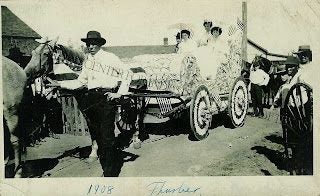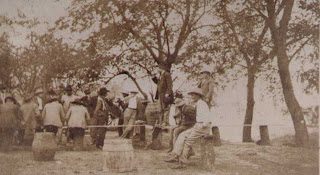The History of Thurber in 12 Objects: Dr. Spratt and His X-Ray Tube

by: Corey Holbert
Dr. J.T. Spratt Sr. was the original owner of an X-ray tube that is now a part of the Gordon Center collections. Dr. Spratt tended to a number of patients in Pecos and Mingus. Practicing near a mining town Dr. Spratt may have conducted X-ray examinations of miners who became sick or injured while working. Although X-ray technology was elementary during Dr. Spratt’s time he could have used X-ray imagery to further his knowledge and inform patients about their health.
Maintaining good health would have been a major concern to residents and coal miners alike in areas Dr. Spratt practiced. Working in coal mines poses major health risks. Besides freak accidents and mine shaft fires, miners were exposed to massive amounts of coal dust for extended periods of time. The inhalation of coal dust can culminate into a disease known as “black lung”. There is still no known cure for this disease aside modern cancer treatment using radiation or simply quitting your job and hoping for a recovery.

W. K. Gordon Center, Hinton Collection
In her book, A Way of Work and a Way of Life author Marilyn D. Rhinehart informs us in 1910 891 males were employed as coal miners and 140 additional men were listed as having occupations related to coal mining within Texas and Pacific coal mining operations. Rhinehart adds that same year miners worked an average of 242 days while each man mined an average of 1.36 tons per day. The sheer amount of work made coal miners more susceptible to developing black lung. Although Dr. Spratt would not have been able to provide a direct cure for the disease his use of X-ray imagery enhanced his ability to care for patients.
The history of the X-ray began in Germany. In 1895 German physicist Wilhelm Conrad Röntgen accidentally discovered a new ray. He began calling his discovery X-rays because of their unknown nature. Röntgen discovered that X-rays were a form of radiation that had the ability to penetrate the inside of the human body. His work revolutionized the medical field. For his discovery of X-rays Röntgen received a Nobel Prize for physics in 1901.
The X-ray tube has multiple names: it has been known as both a Crookes tube and Coolidge tube. Historians credit Sir William Crookes with inventing the X-ray tube which was subsequently named after him in the late nineteenth century. The use of X-ray radiation for clinical imaging was first used in the Crookes tube. William Coolidge later improved the quality of the vacuum on the Crookes tube by using a thermionic effect from a tungsten filament to produce electrons.
Dr. Spratt brought sophistication to his medical practice by using an X-ray tube. The new technology enhanced his ability to treat patients. The X-ray tube provided answers to medical issues that existed long before its invention. Röntgen, Crookes, and Coolidge contributed to the development of X-ray technology used in this Texas coal mining town that assisted doctors in treating their patients. By looking at history as an interconnected web of events we can better see the beautiful, complicated connections between people across the world and through time.





